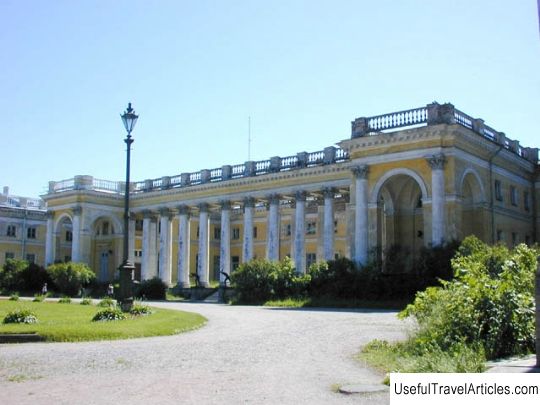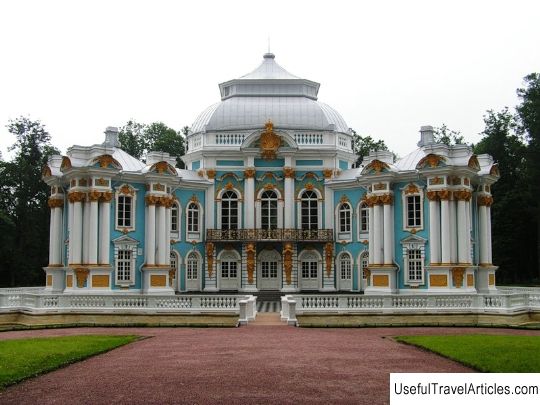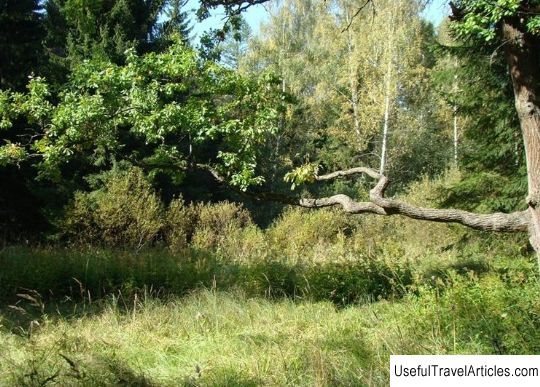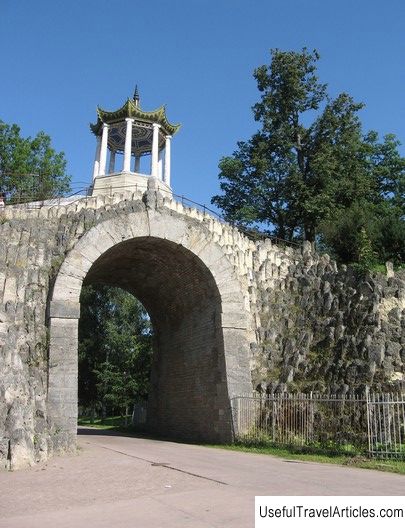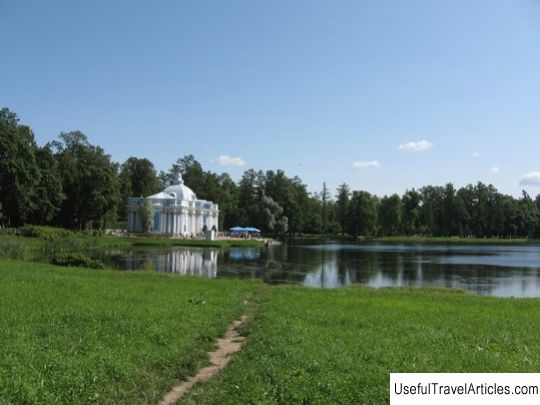Catherine Palace and Park description and photos - Russia - St. Petersburg: Pushkin (Tsarskoe Selo)
Rating: 8,3/10 (1029 votes) 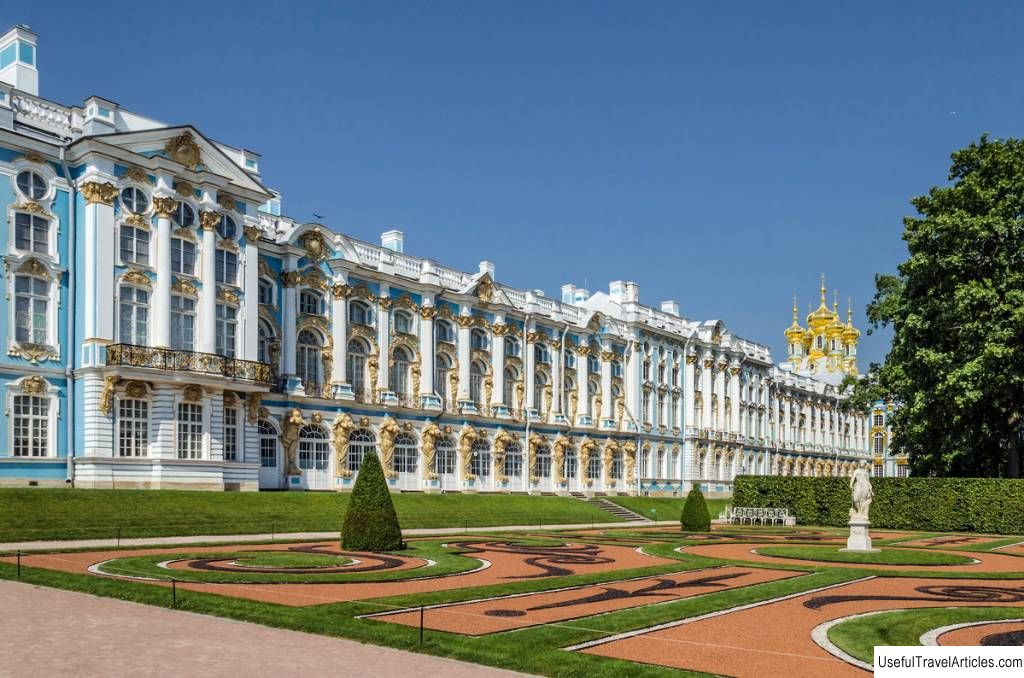
Catherine Palace and Park description and photos - Russia - St. Petersburg: Pushkin (Tsarskoe Selo). Detailed information about the attraction. Description, photos and a map showing the nearest significant objects. Photo and descriptionThe grandiose ensemble of the Catherine Park in Tsarskoe Selo (Pushkin) is the summer residence of three empresses : Catherine I, Elizabeth, Catherine II. The Grand Catherine Palace is surrounded by two parks, in which many pavilions and park buildings of the 18th-19th centuries have been preserved, and in it the original Baroque interiors, including the legendary amber room, have been recreated. The Great Catherine PalaceThe very name "Tsarskoe Selo" initially had nothing to do with the word "tsar". There was a Swedish "Saar manor" , that is, a manor "located in a high place." Peter I donated this place to A. Menshikov , and after his disgrace it became the property of Tsarina Ekaterina Alekseevna . So the Saar manor became Tsarskoe Selo. The visiting card of Tsarskoe Selo is the Catherine's Palace . It began to be built under Catherine I and was rather small, two-story, in the Dutch style beloved by Peter I , like his own Monplaisir in Peterhof. Then it was rebuilt twice by Elizabeth. The palace owes its current baroque appearance to the second reconstruction by F. Rastrelli. The huge solemn palace, decorated with gold decor, numerous columns, stucco and statues, still boggles the imagination. Catherine II did not really like him for his splendor, and she tried to make his appearance more modest, but this did not work out too well. The interior of the palace was also extremely richly decorated. There are two enfilades of rooms with ceremonial decoration, the most magnificent are the central ones - the Great Hall and the Picture Hall . It was in this palace that the famous Amber Room , a study decorated with amber prefabricated panels, was once located. Now only a few items remain from the original Amber Room: the decoration was removed during the occupation and its location is still a mystery. But now, as a result of many years of work by restorers, which began in 1981, the Amber Room has been recreated and you can see it. Under Elizabeth Petrovna, the court church of the Resurrection was built and consecrated. Its initial project belongs to the architect S. Chevakinsky , and was completed by F. Rastrelli, harmoniously fitting the temple into the overall silhouette of the Grand Palace. The church, like the entire complex, was created in the Baroque style and is distinguished by its elegance and beauty. It burned twice and was renovated twice - in 1820 and in 1861. Leading Russian artists were involved in the restoration of the decoration and painting. To date, not so much of the original decoration has survived - only a few icons and details of the plafonds, but the interior of the church has been completely recreated, and it is part of the museum exposition. Tsarskoye Selo Palace was one of the favorite residences of Emperor Alexander I . Catherine II actually took her first grandson from her parents and raised herself, so he spent the summer time here with her and then preferred the old Catherine Palace for life, despite the fact that his own palace appeared nearby. Alexander I, for example, happily spent the night in the old Bedchamber , which was finished under Elizabeth, at one time it was the bedroom of Catherine II, and since 1782 it belonged to him. His study, too, has remained unchanged since the days of his grandmother. But some of the rooms were redesigned for him in a new, Empire style: Reception room, Front office and others. Now they have been recreated and the memorial museum of Alexander I is located here. There are two more permanent exhibitions in the palace. One is dedicated to the stay of the Romanov family in Tsarskoe Selo - it occupies a small suite of the palace. The second tells about the ceremonial imperial exits and is located in the building of the palace stable. Old Park The park began to be established under Peter I and Ekaterina Alekseevna. The names of two Dutch gardening masters are known who stand at its origins - J. Roosen and I. Focht . The part of the park that goes back to them is called the Old Park. This is a regular park, which is divided into ledges going down from the palace with a whole cascading system of ponds. Under Elizabeth, the park expanded. Perestroika was led by F. Rastrelli. There were new entertainments: Roller Coaster was arranged, new pavilions - Grotto and Hermitage . The baroque Hermitage is located on an island. It is decorated with snow-white columns and statues and, as it were, rhymes with its decor with the Grand Palace. The "Hermitage" was arranged so that there was a kitchen under the floor below - if necessary, tables with refreshments rose from under the floor, and then they were removed back, and it was possible to dance in the pavilion. Now there is a museum, and you can see the work of all these mechanisms with your own eyes. The pavilion is open only in the summer. The "Grotto" pavilion stands on the very shore of the pond and imitates a river grotto - it was originally decorated with shells, there was a small pier and you could approach it and swim by boat ... Ekaterina changed the interior and turned the "Grotto" into her "Morning Hall": here she was engaged in state affairs in the morning or read. English Park Under Catherine, another park was laid out, already landscape, in the English style . It was equipped by the famous gardener Johann Bush , and the buildings were designed by the English architect C. Cameron . It was connected with the Old Park by a front gallery with 44 columns, from which a magnificent view of the park and the pond opens. The ladies-in-waiting lived here, so the small "Tsvetnoy kindergarten", which was built here especially for them, began to be called " Freilinsky ". Now, fragrant flowers are still planted here. For Catherine, a real Hanging Garden was arranged in the antique style, from which the Empress could go down to the park along the ramp. The gallery connected it with the Cold Baths pavilion , where baths were arranged below, and on the second floor there were rest rooms decorated with semi-precious Ural gems - Agate rooms . Now there is a museum exposition. To perpetuate the victories of Russian weapons, Catherine ordered to erect several memorial columns and pavilions in the park: in honor of the Battle of Chesme, annexation of the Crimea, etc. Under Nicholas I in memory of the Russian-Turkish war, a Turkish Bath pavilion imitating a mosque appeared. Lyceum In the four-story wing, which was added to the Grand Palace at the end of the 18th century, On October 19, 1811, a new educational institution was opened - Lyceum . We know him now as the school where Alexander Sergeevich Pushkin studied. The first graduation of the lyceum students preserved their friendship for many years, they celebrated the day of February 19 throughout their lives and until the end of their lives they wore cast iron memorial rings, and they called each other - cast iron workers. But besides A.S. Pushkin , in the first edition of the lyceum there were many people who became famous and reached high positions. Pushkin's classmates were State Chancellor A. Gorchakov , Director of the Imperial Library M. Korf , Decembrists I. Pushchin and V. Kuchelbecker . After Pushkin, for example, the writer M. Saltykov-Shchedrin . The Lyceum was in Tsarskoe Selo until 1843, then moved to St. Petersburg. Now there is a memorial museum dedicated to the Pushkin edition of the lyceum. The interiors of the Great Hall have been recreated - the very one where the graduates once held the exam, the Library, the Newspaper, the rooms of the lyceum students, the classes and the rooms of the tutor. In addition to the reconstructed memorial rooms, 9 halls are occupied by an exposition that tells about the history of Russian education since the 17th century and about the history of the Tsarskoye Selo Lyceum. Of course, the most important place in it is given to Pushkin. It is here that the famous painting by I. Repin "Pushkin on the exam on January 8, 1815" is kept, the original manuscripts and drawings of Pushkin are kept here, there is even a small copy of the famous Opekushinsky monument to the poet, which was installed in Moscow on Pushkin Square. The museum was opened here in 1949 for the next Pushkin's anniversary. But it is not frozen, but continues to develop, so now its exposition includes interactive multimedia elements - it will interest not only adults, but also modern teenagers. Interesting factsOn the gilded finish The Grand Catherine Palace took more than 100 kilograms of gold. It is believed that the first trees in the Catherine Park were planted personally by Peter I. During the retreat, the Nazis mined the Catherine Palace, the "Grotto" and the gallery connecting parks. Sappers managed to defuse the bomb, so these buildings were not damaged.                                   We also recommend reading Monument to Mikhail Lermontov description and photo - Russia - South: Gelendzhik Topic: Catherine Palace and Park description and photos - Russia - St. Petersburg: Pushkin (Tsarskoe Selo). |

